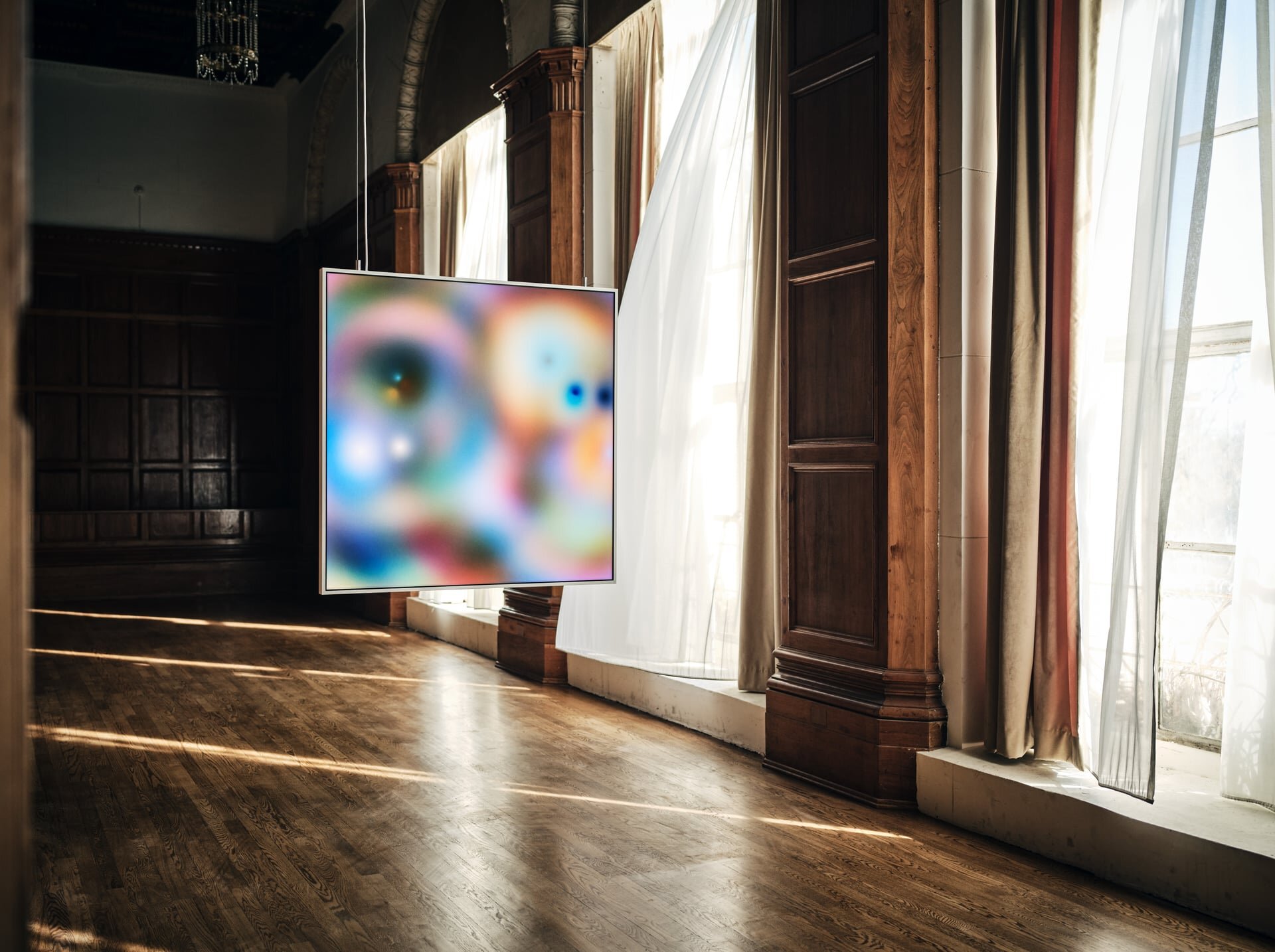Aug 2025
Why the Future of Art Needs a New Business Model
Since the advent of digital art more than 60 years ago, digital artists have been relegated to the margins, and it’s been almost impossible for them to be properly compensated for their work.
At Layer, we’re changing that model and bringing digital art into the real world, providing the first collectible, museum-quality platform for digital art, along with a compensation model that’s modern and sustainable, built for today’s subscription-based streaming economy.
This is how it works: Artists on Layer receive ongoing royalties based on viewership and platform engagement. There’s no need to sell tokens or prints (an important distinction for us). This model is entirely additive for artists and lives peacefully alongside transaction-based models like NFTs, making them optional rather than required.
All art on Layer is exclusively intended for display on the Layer Canvas. In other words, it’s intended for physical display, on a wall. But the art itself can be wholly or partly exclusive, with fully exclusive works driving higher returns to the artist per view.
As Layer scales, it stands to generate millions of dollars for digital artists. We use “ViewTime” metrics to ensure artists are paid for every second their work is enjoyed. It’s an artist-first model. The first such model that rewards quality not volume, and deep engagement over time versus a fast-turnover.
To understand how we arrived at the idea of Layer and this new royalty model for artists, it may help to have a short history of digital and generative art.
The origins of the term generative art is “art that is produced procedurally or using an algorithm.” These processes do not necessarily have to be performed by a computer and as such generative art predates computers. However, broadly speaking, digital art was “born” in the 1960s and scaled with the use of early computers.
In the 1980s and 90s, the personal computer made digital art a more accessible medium for artists everywhere, and the rise of the internet accelerated mass media and net art, as well as early practitioners. More recently, the invention of NFTs brought unparalleled growth, promising equity for digital artists, though that promise is yet to be fully realized. And as powerful as AI has been in generating new kinds of art, it’s also sparked real fears around authorship and attribution.
So here we are in the 2020s, living in a digital world, but the very technology that’s enabled digital art has also confined it to snatched moments on phones and websites. The internet once gave artists an advantage, but that edge has dulled. AI, shifting algorithms, and extractive platforms have pushed artists to the outside. Fine art sales are struggling, digital work is overlooked, and social spaces are flooded with noise. But that doesn’t mean we can’t build something better.

At Layer, we’ve collaborated with some of the finest digital artists, hand-selecting original works by artists including Casey Reas, Zach Lieberman and Leander Herzog. Layer affirms the human hand behind their work. We’re focused on lifting these artists up, creating real value for their work through curation, royalties, and trust. Not hype. By putting artists first and boosting the value of their work, we hope to support the entire digital art ecosystem, increasing the value of digital art — be it on Layer, on a museum wall, or as an NFT. That’s something that anyone who wants to live with more art in their lives should appreciate.
We believe this model gives digital art the reverence and value it deserves. Layer also gives it a place in the real world, ensuring it is alive in our spaces and woven into everyday moments.
Layer isn’t just changing how digital art is collected. We're changing where it lives, how it's valued, and who it's for. We want to make digital art more visible, more valuable, and more accessible. For everyone.

Don’t miss the
next conversation
Sign-up to our newsletter and
keep up with Layer updates.
